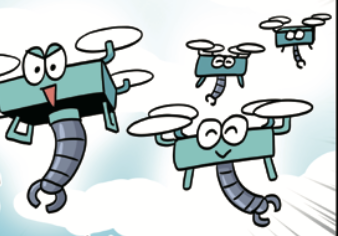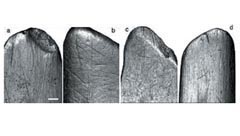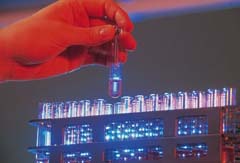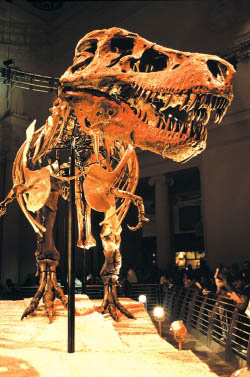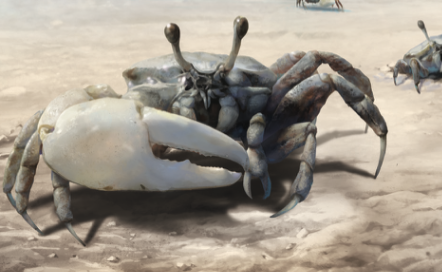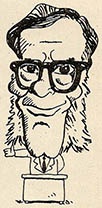
녹색식물의 진화에 관한 자세한 내용을 둘러싸고 과학자들이 두개의 그룹으로 나뉘여 논쟁을 벌이고 있다.
녹색식물은 태양에너지를 이용해 단순한 물질 즉 이산화탄소, 물 그리고 광물질들을 자신의 조직을 구성할 복합물질로 전환시키기 때문에 이 문제는 중요한 것이다. 모든 동물(우리 자신을 포함해)은 직접 간접으로 식물조직에 의존한다. 동물은 식물을 먹거나 식물을 먹는 다른 동물을 잡아먹는다.
더욱이 단순한 물질로부터 조직을 만드는 과정에서 녹색 식물은 산소를 방출한다. 우리 대기중의 산소는 이렇게해서 생성된 것이며 또 유지되고 있는 것이다. 그리고 모든 동물은 이 산소를 호흡하고 있고 그 결과 우리의 생명은 지속되고 있는 것이다.
음식과 산소는 그러므로 녹색식물이 동물계에 주는 선물이다. 따라서 녹색식물이 어떻게 존재하게 되었는지를 설명해주는 이론은 우리의 큰 흥미거리이다.
모든 녹색식물, 또한 모든 동물들은 세포라는 현미경적 단위로 구성돼 있다. 세포는 매우 작지만 매우 복잡한 구조를 갖고 있으며 소기관(小器官)이라는 보다 작은 구조들의 집합체이다.
예컨대 모든 세포에는 핵이 있으며 핵은 세포가 증식되고 특성을 유지할수 있도록하는 유전물질을 갖고 있다. 세포는 음식물분자가 산소와 결합, 에너지로 바뀌는 장소인 '미토콘트리아'도 갖고 있다. 또한 각개 세포의 특수한 단백질분자가 만들어지는 '리보솜'도 갖고 있는 등 여러 기관을 내포하고 있다.
녹색식물의 세포는 동물세포가 갖지 못한 하나의 소기관을 갖고 있다. 녹색식물은 햇볕의 에너지를 사용, 영양분과 산소를 만드는 능력을 가진 엽록체를 갖고 있다. 동물세포에는 이 엽록체가 없다.
어떻게 식물과 동물을 만드는 이 작은 복잡한 세포가 진화됐을까. 언제 최초로 만들어 졌을까?
화석기록을 연구하고 생명체의 희미한 과거를 파헤치고 있는 과학자들은 식물과 동물을 만드는 복잡한 구조의 세포가 등장한 것은 약 14억년전이라는 견해를 갖고 있다. 그때까지 행성지구는 이미 32억년동안 존재해 왔다. 따라서 최초의 세포들이 진화했을만한 긴 기간이 있었던 것이다.
이러한 세포들의 진화 전단계에 보다 작고 원시적인 세포가 단순한 생명체의 형태로 아마 20억년동안 존재했을 가능성이 있다. 이 작고 원시적인 세포는 오늘날에도 박테리아의 형태로 존재하고 있다. 박테리아는 너무 작아 1천여개가 모여 정상적인 동·식물세포 한개안에 들어 갈 수 있을 정도이다.
박테리아 세포는 동·식물 세포가 갖고 있는 풍부한 소기관들을 갖추지 못하고 있다. 박테리아는 매우 다양하다. 일부 학자들은 약 14억년전에 여러 다른 형태의 박테리아 세포들이 결합해 동·식물을 만드는 복잡한 세포가 된 것이 아닌가하고 생각한다. 세포핵은 유전 기능을 수행하던 박테리아 세포에서, 미토콘드리아는 에너지 창출을 전담하던 박테리아 세포에서 그리고 리보솜은 단백질을 생산하던 박테리아 세포에서 출발했다는 등으로 생각하고 있는 것이다.
특히 엽록체는 햇볕을 에너지로 전환시키던 박테리아 세포였었다고 생각한다. 이런 유기체들은 오늘날에도 존재하는데 이는 '시아노박테리아'라고 불리운다.
다만 한가지점에서 시아노박테리아와 엽록체는 다르다. 녹색식물의 엽록체는 햇볕의 흡수에 긴요한 열쇠가 되는 두가지 유사한 물질을 갖고 있다. 그것은 엽록소―a와 엽록소―b이다. 그러나 시아노박테리아는 오직 엽록소―a만을 갖고 있다. 엽록체 세포가 만들어진뒤 제2의 구성요소로 엽록소―b를 생성시켰을 가능성이 있다.
그런데 1985년 '프로클로로드릭스'라는 시아노박테리아의 한 변종이 네덜란드의 연못에서 발견되었다. 이것은 엽록소―a와 엽록소―b도 갖고 있었다. 이 변종은 녹색식물의 세포에서 발견되는 엽록체가 된 원래의 시아노박테리아의 후손일 가능성이 있다.
이것을 점검하기 위해서는 프로클로로드릭스와 엽록체의 미세한 분자구조를 서로가 얼마나 비슷한지 연구할 필요가 있다.
텍사스 A&M대학의 '클리포드 모든'과 '수전골든'은 프로클로로드릭스와 엽록체에 함께 있는 열쇠가 되는 단백질을 연구했다. 그들은 이 두가지가 제각기 갖고 있는 단백질은 중요한 유사점이 있고 따라서 이 특성으로 인하여 시아노박테리와는 구별된다는 것을 발견했다. 이 사실은 프로클로로드릭스와 엽록체는 공동의 선조를 갖고 있는 것으로 보이게끔 한다.
그러나 인디애나대학의 '신 터너'와 그의 동료들은 프로클로로드릭스와 엽록체의 핵산을 연구하면서 이 두가지가 그다지 가까운 사이가 아닌것처럼 보이게 하는 차이점들을 찾아내었다.
분명히 보다 깊은 연구가 필요하다. 그러나 이러한 분자 분석에 쓰인 기술은 위에 대한 특정의 문제를 풀기위해서 뿐만아니라 전반적인 세포의 진화과정을 해명하기 위해서도 사용되어질 수 있다.
Two groups of scientists are now locked in a controversy on the details of how green plants evolved.
This is a major question because green plants use the energy of sunlight to convert simple substances-carbon dioxide, water and minerals-into the complex substances making up plant tissue. All animals (including ourselves) depend on plant tissues, either directly or indirectly, to survive.
Animals either eat plants, or they eat other animals that eat plants.
Furthermore, in forming their tissues out of simple substances, green plants discharge oxygen. This is how the oxygen content of our atmosphere was formed and is maintained. And it is this oxygen that is breathed by all animal life and that keeps us alive.
Since food and oxygen are thus the gift of the green plants to the animal world, anything that would explain how they came to be is of profound interest to us.
All green plants, and all animals, too, are made up of microscopic units called cells. The cells, although very tiny, have a complex structure, and are made up of still smaller structures called "organelles."
For instance, all cells have "nuclei" that contain the materials of heredity that allow cells to multiply and preserve their characteristics. They have "mitochondria" where food molecules are combined with oxygen to form energy. They have "ribosomes" where each cell's special protein molecules are formed, and so on.
The cells of green plants have one organelle that animal cells don't have. Green plant cells have "chloroplasts" that possess the ability to use the energy of sunlight to form the food and oxygen. Animal cells don't have them.
How did these complicated little cells, making up plants and animals, evolve? When did they first form?
Scientists who study the fossil records and delve back into dim past of life forms are of the opinion that the first cells of the complicated type that make up plants and animals formed about 1.4 billion years ago. By that time, though, the planet Earth had already existed for 3.2 billion years, so there was a long period during which those first cells might have evolved.
It is possible that before those first cells evolved there were smaller, more primitive cells that existed as the only forms of life over a period of perhaps 2 billion years, Such small primitive cells still exist today in the form of bacteria. Bacteria are so small that a thousand of them can fit inside a typical plant or animal cell.
Bacterial cells don't have the rich collection of organelles that plant and animal cells have, and they come in different varieties. Some scientists think about 1.4 billion years ago, different types of bacterial cells combined to form the more complicated cells that make up plants and animals. Nuclei originated as bacterial cells that specialized in hereditary control. Mitochondria were once bacterial cells that specialized in energy formation.
Ribosomes were once bacterial cells that specialized in protein production, and so on.
In particular, chloroplasts were once bacterial cells that specialized in the use of sunlight for energy. Such organisms still exist today and are celled "cyanobacteria."
In one respect, thought, cyanobacteria and chloroplasts are different. The chloroplasts of green plants contain two very similar key substances that are essential to the trapping of sunlight. These are "chlorophy11-a" and "chlorophy11-b" Cyanobacteria, however, contain chlorophy11-a only. It may be that after chloroplast cells formed, they evolved chlorophy11-b as a second component.
In 1985, however, a variety of cyanobacteria called "Prochlorothrix" was located in ponds in the Netherlands, and these did contain both chlorophy11-a and chlorophy11-b. It seemed possible that this variety was a descendant of the original cyanobacteria that became the chloroplasts found in the cells of green plants.
To check on this, it was necessary to study the fine molecular structure of Prochlorothrix and chloroplasts to see how similar they were.
Clifford W. Morden and Susan S. Golden of Taxas A & M University studied a key protein that exists in both Prochlorothrix and chloroplasts. They found that the proteins of each had important similarities and that this trait distinguishes these two types of cells from other cyanobacteria. This makes it appear that Prochlorithrix and chloroplasts have a common ancestor.
However, Sean Turner and others at Indiana University studying nucleic acids in both Prochlorothrix and chloroplasts find differences that make it look as though the two are not closely related.
Obviously, more work is needed.
The technique used in these molecular analyses, however, may come to be used not only to solve this particular problem but to work out the evolutionary development of cells generally.
(c) 1989, Los Angeles Times Syndicate





